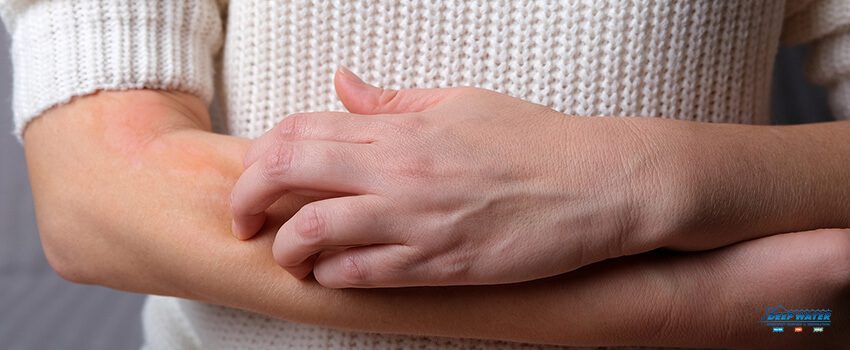Along with the beauty and splash of colors the season gives, spring brings forth the most terrible spring allergies, including mold allergy.
Lessening one’s exposure to certain allergens, taking medications, and maintaining a clean home do well in managing the atrocious spring allergies symptoms.
What Is Mold Allergy?
All over the world, molds are common. If they are disturbed, the spores may fly into the air. An allergy to mold could be a chronic, persistent allergy that lasts for many seasons.
Both mold and mildew are considered fungi. They reproduce and grow differently in various places and conditions. The seeds, also called spores, are carried through the air. Some spores spread more easily in windy, dry conditions. Others can spread through fog and dew in high humidity.
Some people develop allergic reactions when they inhale spores. They readily manifest signs of mold allergy. Allergic reactions to fungus spores commonly occur in July to early autumn. But since fungi can be found in many locations, both indoors and outdoors, allergies can occur all year.
While there are many mold types, only a few can cause allergic reactions. Many molds thrive on fallen leaves and rotting logs. Molds are not like pollens. They do not die after the first frost kills them. Most outdoor molds are inactive in winter. In spring, they grow on plants that have been damaged by the cold. Fungi thrive in moist areas indoors. They often grow in damp areas such as the bathroom, kitchen, or basement.
What Causes Spring Allergies?
Pollen infamously causes spring allergy. These tiny grains are released into the atmosphere by trees, grasses, and weeds to fertilize other plants. They can cause allergic reactions by getting into the noses of people who are allergic to them.
The immune system mistakenly perceives pollen as a threat, so the body releases antibodies to attack them. Consequently, it causes the blood to release chemicals called histamines, which cause a runny nose, itchy eyes, and other related symptoms.
Pollen can travel miles, so it isn’t just about the plants around you. Pollen counts are exceptionally high on breezy days because the wind picks up these sneeze-inducing seeds and transports them through the air. Rainy days wash out the allergens.
However, the season’s trigger doesn’t only come from pollen. Mold allergy can also be triggered by spring rains as there will be mold growth in your home and surrounding areas. Spring cleaning also brings dust mites into your home.
What Are the Common Mold Allergy Symptoms?
Indoor molds can cause allergies. Mold allergy symptoms can be similar to other allergies such as itching and runny noses, congestion, dry skin, scaling, and congestion.
Mold spores can get in your nose and cause symptoms of hay fever. They can also reach the lungs, triggering asthma. Outdoor mold allergies can be severe in the winter, summer, fall, or all year round in certain climates.
Spring mold allergy symptoms are caused by a chemical released from allergy cells in the nose or lungs. Sometimes the reaction occurs immediately. Other times, a mold allergy showcases delayed symptoms, which lead to worsening asthma or nasal congestion. A basement or damp room at home can worsen spring mold allergy symptoms.
Some patients may develop allergic bronchopulmonary aspergillosis (ABPA), a more severe form of asthma. This condition is a combination of an allergic and inflammatory reaction to mold. It mimics asthma symptoms, including severe wheezing, shortness of breath, and coughing.
How Can We Prevent Mold Allergy?
Mold needs moisture to grow, so it is often found on logs, in grasses, and piles of leaves. Mold can grow inside if there is moisture and poor ventilation.
These are some of the ways you can protect yourself from mold allergies, both indoors and out:
1. Use a dehumidifier.
Keeping humidity below 45 or 35 percent in your home helps prevent mold growth.
If you live in a large house, you might consider installing a basement dehumidifier. This is where mold thrives.
Make sure your dehumidifier drains automatically. This is much more efficient than manually emptying the reservoir, which you may forget and lead to mold growth. Attach a hose to your unit and let it drain into a sump pump drain.
2. Use an air conditioning unit.
Maintain a cool and comfortable indoor environment. Use your air conditioner in the summer months to remove moisture. It helps dry your house and prevents mold growth.
Schedule regular cleanings of your air conditioner to remove any dirt and grime. You should also change the filters and clean out the ducts frequently to keep your air conditioner working well. Regular cleaning also applies to your car’s A/C filter.
Lastly, ducts in your house should be cleaned every year or so to prevent condensation, which could lead to mold growth.
3. Install an exhaust fan in the shower and kitchen.
Concentrate on airflow. Install an exhaust fan in your shower and the kitchen because these places often get wet, thus retaining moisture, which becomes perfect niches for mold to grow. To maintain airflow, keep your doors wide open occasionally.
4. Repair leaks.
Anywhere there is water leaking, mold could be present. You should inspect your basement, bathtubs, and laundry room for any leaks. Check your roof for holes and leaks.
5. Maintain a regular house cleaning schedule.
Signs of mold exposure are evident in damp places at home. Mold can grow on soap film, grout, and tiles. Make sure to clean out your bathroom regularly.
The rubber seal on your washing machine door should also be wiped clean. If you aren’t using the machine, leave it open to prevent moist air from getting trapped.
Mold can grow on the refrigerator gaskets, drip pans, and garbage cans in the kitchen. Watch out for mold growth in water bottles or pitchers. Allow them to dry completely after emptying them.
6. Use a dust mask when cleaning.
Wearing a dust mask prevents you from inhaling allergens when cleaning. Ask your pharmacist or allergist which mask is best for you to prevent developing an allergy to molds.
7. Avoid activities outdoors when mold counts rise.
Check with your health care provider or allergist for resources that provide information about pollen and mold levels in different country areas. Mold allergy symptoms are most severe in spring and autumn and on dry and windy days.
8. Shower after outdoor activities.
Mold spores , similar to pollen, are easily eliminated after a good bath. Take a shower as soon as you finish playing a sport outside or raking leaves. Showering stops mold from spreading to your indoor environment.
What Can You Expect From a Mold Remediation Specialist?
Hiring professionals to identify and resolve the signs of mold exposure saves anyone time, money, and effort because they have all the appropriate equipment and gear.
Mold remediation specialists inspect all areas they visit for signs of infestation. They will then proceed with the containment and removal of the infestation.
Experts use barriers to stop mold spores spreading. The HVAC system should be turned off to prevent the spread of mold spores. Then they use negative pressure, negative chambers, powerful air scrubbers, vacuums, and other containment methods to get rid of the mold.
They also deodorize and remove mold from items to restore their original state.
Deep Water Emergency Services & Mitigation Rescues You From Mold Allergy
Do-it-yourself is not a good idea when dealing with something as hazardous as mold. Mold growth is possible at any time. It is best to contact a professional mold mitigation company in Denver, CO like Deep Water Emergency Services & Mitigation.
Please contact us if you notice any signs of mold allergy or musty odors in your home. Our mold remediation experts will visit your home to remove the mold efficiently and effectively. Call us today!






